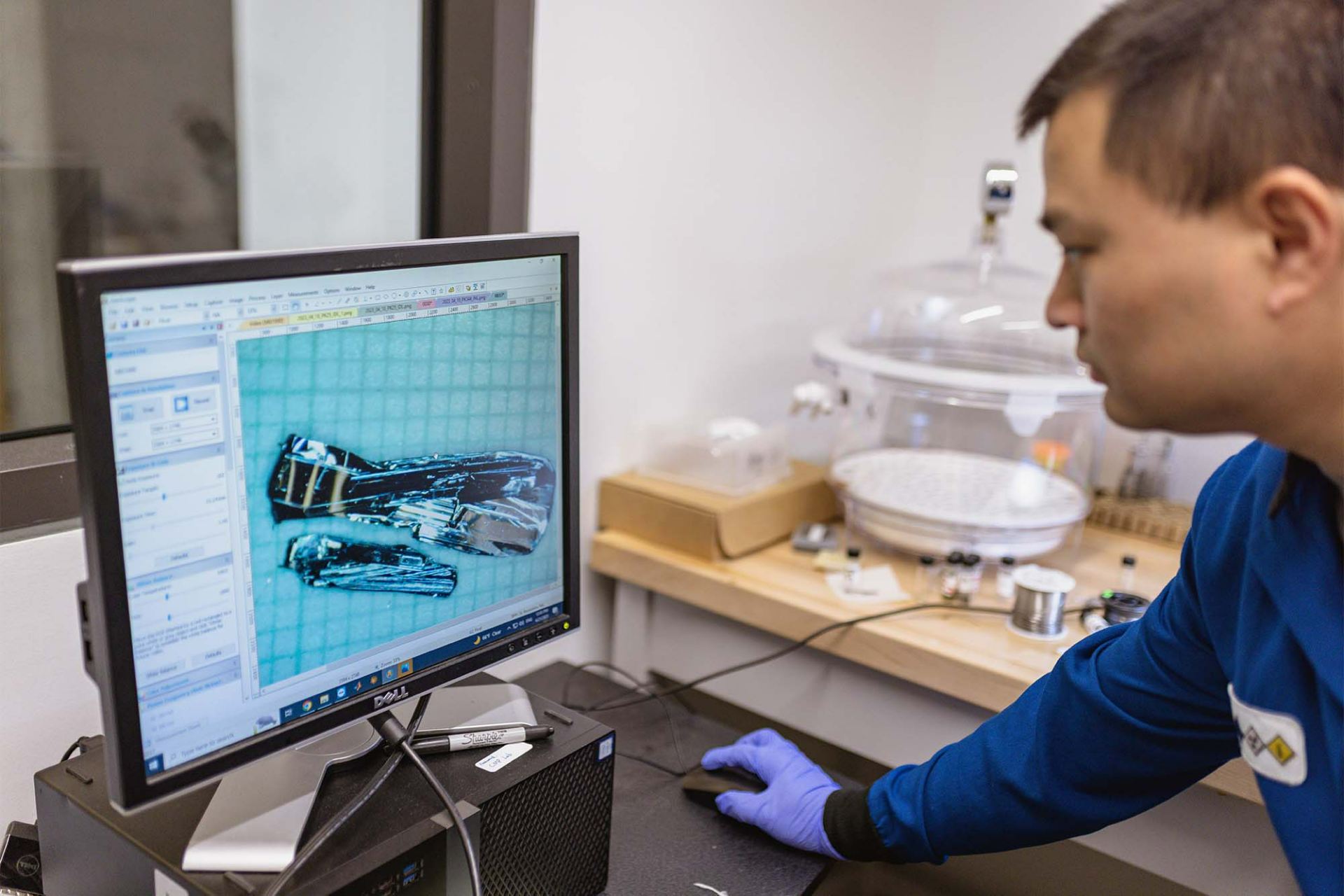Physicists’ 2D Crystals Show Promise for Advanced Electronics
By: Amanda Siegfried | April 26, 2023

A team of researchers, led by University of Texas at Dallas scientists, has developed a new technique to grow exceptionally large, high-quality crystals that could help make advanced electronics, such as spintronic and magnetic optoelectronic devices, a reality.
Very thin layers — just one or two atoms thick — can be exfoliated easily from the bulk crystals. These two-dimensional layers exhibit surprising magnetic properties and are very stable in air at room temperature, making them of interest for use in devices that incorporate stacked layers of different materials.
Dr. Wenhao Liu, a postdoctoral research associate in the Department of Physics in the School of Natural Sciences and Mathematics, developed the solid-vapor synthesis technique to grow chromium sulfide bromide crystals, which typically are made through the chemical vapor transport (CVT) method.

“Although this material itself is not new, our method to create it stands out from other methods,” said Liu, who works in the lab of Dr. Bing Lv, associate professor of physics and a corresponding author of the report on this new technique. “Our method is simpler, more direct and yields much bigger and higher-quality crystals than the conventional CVT method.”
The synthesis technique, which involves the simple usage of a box furnace, produces crystals of 1 to 2 centimeters, which is 10 times larger than those produced with other methods, said Lv (pronounced “love”).
The magnetic properties of exfoliated layers surprised the research team.
Each electron in a material has a property called spin, which can be either up or down, and the orientation of spins determines the material’s magnetic properties. For example, when all the spins are aligned in the same direction, the material is ferromagnetic, whereas when spins are aligned parallel but in opposite directions — antiparallel — the material is antiferromagnetic.
“Typically, this magnetic ordering — the alignment of spins — takes place instantaneously in a material,” Lv said. “The uniqueness of our 2D material is that antiferromagnetic order increases and propagates throughout the crystal in three stages as we lower the temperature.”
Magnetic anomalies — increases in the magnitude of ferromagnetic order — occur in the material at 185 kelvins (minus 126.7 degrees Fahrenheit), 156 kelvins (minus 178.9 degrees Fahrenheit) and 132 kelvins (minus 222 degrees Fahrenheit).
“This is the first time this phenomenon has been observed in chromium sulfide bromide crystals. I didn’t believe it when we first saw this because it goes against our intuitive thinking.”
Dr. Bing Lv, associate professor of physics in the School of Natural Sciences and Mathematics
“This is the first time this phenomenon has been observed in chromium sulfide bromide crystals. I didn’t believe it when we first saw this because it goes against our intuitive thinking,” Lv said. “It is an interesting observation, because this kind of ‘soft’ magnetism might be useful in certain magnetic memory devices.”
The crystal is stable in air, a convenient and essential property for future research and possible use in high-performance devices, Liu said.
“Typical crystals can react with water or oxygen in the air, which changes the chemical composition or structure of the crystal,” said Liu, who is a co-lead author of the report. “That’s why in many cases, crystals have to be capped with an inert material. Our crystal removes that barrier, which makes it easier to work with for new device fabrication and development.”
Nikhil Dhale, a physics doctoral student, and Aswin Kondusamy, a materials science and engineering doctoral student, also contributed to the findings, along with researchers from the University of Michigan, the University of North Texas and the University of Houston.
The research appears in the Oct. 25, 2022, print edition of the journal ACS Nano. UT Dallas researchers were funded by the Air Force Office of Scientific Research and the National Science Foundation.

Media Contact:
Amanda Siegfried, UT Dallas, 972-883-4335, amanda.siegfried@utdallas.edu, or the Office of Media Relations, UT Dallas, (972) 883-2155, newscenter@utdallas.edu.





